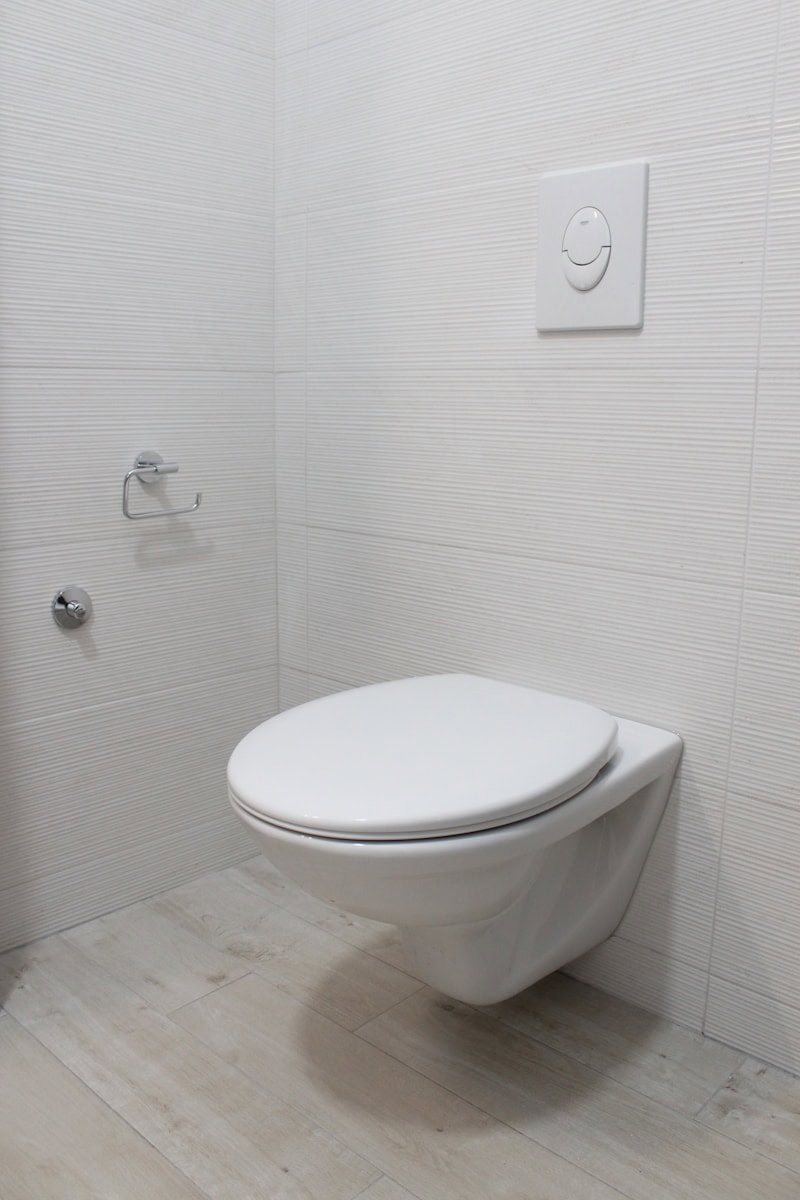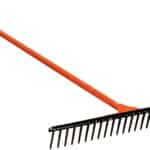Anyone with a running toilet knows how annoying and wasteful it can be. This common problem can lead to higher water bills and is often caused by a few simple issues. The most common causes of a running toilet include a faulty fill valve, a leaky flapper, or an overflow pipe issue.
By learning how to diagnose these problems, any homeowner can save time and money. Fixing a running toilet is a task most people can do without needing to call a plumber. With basic tools and a bit of patience, you can usually fix the issue in about an hour.
This guide will walk you through simple steps to troubleshoot and resolve the problems. You’ll learn how to shut off the water, check the fill valve, and replace faulty parts if needed. By following these tips, your toilet will be running smoothly in no time.
Fixing a Running Toilet: A Step-by-Step Guide
1. Identify the Culprit:
A running toilet usually stems from two main issues: a faulty flapper or a malfunctioning fill valve.
- The Flapper: This rubber seal at the bottom of the tank prevents water from leaking into the bowl. A worn-out or misaligned flapper can’t seal properly, causing water to constantly flow.
- The Fill Valve: This controls the water level in the tank. A worn-out seal or improper adjustment can lead to continuous refilling, resulting in a running toilet.
2. Test the Flapper:
Gently press down on the flapper. If the running sound stops, it’s likely the problem. Check the chain connecting the flapper to the flush handle—it shouldn’t be too loose or too tight.
3. Adjust or Replace the Flapper:
If the flapper is damaged or doesn’t create a good seal, it’s time for a replacement. Turn off the water supply, flush the toilet to empty the tank, detach the old flapper, and install the new one, making sure it fits snugly.
4. Check the Fill Valve:
If adjusting the flapper doesn’t solve the problem, lift the float arm on the fill valve. If the water stops, it’s a fill valve issue.
5. Adjust the Float Arm:
If the float arm is too high, the tank will overfill. Bend or adjust the arm to lower the water level. It should sit about an inch below the overflow pipe.
6. Replace the Fill Valve:
If adjusting the float arm doesn’t fix the issue, the fill valve might need replacing. Turn off the water supply, flush the toilet, disconnect the water supply line, and remove the old fill valve. Install the new one following the manufacturer’s instructions.
Troubleshooting Tips:
If you’re still experiencing a running toilet, consider these additional steps:
- Check for leaks around the base of the toilet and tighten the bolts if necessary.
- Ensure the refill tube is correctly positioned and not interfering with the flapper.
- Clean any debris or mineral buildup from the flush valve or flapper seal.
If all else fails, it’s time to call a plumber.
Additional Resources:
- YouTube Tutorials: Many helpful videos demonstrate how to fix a running toilet.
- Home Improvement Stores: They offer a variety of replacement parts and can provide advice.
Remember, patience and a few simple tools can often solve a running toilet issue.
Diagnosing the Problem
When a toilet keeps running, finding the source of the issue is the first step. The main areas to check are the flapper, fill valve, and water levels in the tank.
Inspecting the Flapper
The flapper is a rubber seal at the bottom of the tank. It controls water flow from the tank to the bowl. If it wears out, it can cause leaks. To check the flapper, turn off the water supply and flush the toilet. This empties the tank.
Next, look closely at the flapper. Is it cracked or deformed? If so, it needs replacing. Sometimes, the chain connecting the flapper to the flush handle gets tangled. This can prevent the flapper from sealing properly. If the flapper looks fine, try the dye test. Add a few drops of food coloring to the tank and wait 15 minutes without flushing. If colored water leaks into the bowl, your flapper isn’t sealing right.
Checking the Fill Valve
The fill valve controls the water entering the toilet tank after a flush. If this part fails, the tank may never fill up properly, causing constant running. Start by making sure the water supply is off. Then, remove the tank lid.
Locate the fill valve on one side of the tank. Watch for water. If water flows constantly, the fill valve might be broken. Adjusting the valve can sometimes fix minor issues. Look for a screw on top of the valve. Turning it raises or lowers the water level. If adjusting does not work, replacing the fill valve might be necessary.
Evaluating Water Levels and the Float Mechanism
The float mechanism regulates the water level in the tank. There are two types of floats: the float ball and the float cup. Check which type you have. For float balls, bending the arm down lowers the water level. For float cups, adjust the screw connected to the fill valve.
Ensure the water level is about an inch below the overflow tube. This level prevents water from spilling over. To check, flush the toilet and watch how high the water rises. If adjusting the float doesn’t work, there may be an issue with the float mechanism itself. In this case, it may need replacing to ensure the water stops at the correct level.
Making Repairs
Fixing a running toilet can save water and lower your water bill. The repairs usually focus on replacing parts, adjusting the water level, and sealing leaks.
Replacing the Flapper or Fill Valve
A worn-out flapper can cause the toilet to run. Start by turning off the water supply with the shutoff valve. Then, flush the toilet to empty the tank.
Remove the old flapper by unhooking the chain and clip from the flush lever arm. Replace it with a new flapper from a hardware store. Secure the new flapper and reattach the chain with a little slack.
If you need to replace the fill valve, follow similar steps. Turn off the water, drain the tank, then unscrew the old fill valve from the water inlet line. Install the new fill valve according to the directions.
Adjusting the Float and Water Level
The float controls how much water fills the tank. Too much water can cause the toilet to run.
If your toilet has a ball float, bend the float rod down to lower the water level. If there’s a cup-style float, turn the screw on the fill valve to adjust the water level.
Flush the toilet and check the water level. It should be about 1/4 inch below the top of the overflow tube. Adjust it as needed until the water stops at the right level.
Fixing Leaks and Sealing Connections
Leaky connections can make the toilet run. Check the tank-to-bowl bolts and gasket for leaks. If they are loose or worn out, tighten or replace them.
Use channel locks to tighten the bolts, but don’t overtighten. It can crack the porcelain. Inspect the toilet-to-bowl gasket. Replace it if it’s damaged.
Check the water inlet line and shutoff valve. Make sure they are tight and not leaking. Apply a sealant to connections if needed to prevent leaks.
Fixing these parts can stop your toilet from running and save water. If the problem persists, it might be best to call a plumber.
Frequently Asked Questions
This section will answer common questions about fixing a running toilet, providing clear and practical steps for various scenarios.
How can one stop a constantly running toilet?
Turn off the water supply to the toilet. Flush to empty the tank. Check the flapper for damage or misalignment. Replace it if needed. Lastly, adjust the float level if the water keeps running.
What steps are needed to fix a toilet with a button flush that won’t stop running?
First, turn off the water supply and flush the toilet. Check the flush valve seal for wear or dirt. Clean or replace it if necessary. Ensure the fill valve and overflow tube are in the correct position.
In what ways can a running toilet be fixed if there’s no flapper involved?
Some toilets use a canister flush valve instead of a flapper. To fix it, turn off the water supply and flush the toilet. Check the canister seal for any damage. Replace the seal or the entire canister if needed.
What should one do when the toilet keeps running after flushing?
If the toilet runs after flushing, the float may be too high. Lower the float so it sits below the overflow tube level. Additionally, inspect the fill valve. It might need a cleaning or replacement.
How can the fill valve be repaired to prevent the toilet from running?
Start by turning off the water supply. Flush the toilet to empty the tank. Remove the old fill valve and install a new one according to the manufacturer’s instructions. Turn the water back on and test the valve.
What adjustments can be made to a toilet’s float to cease it from running?
The float controls the water level in the tank. If it’s too high, water will keep running. Adjust the float by bending the float arm downward or turning the adjustment screw on a cylinder float. Make sure the water level is below the overflow tube.







